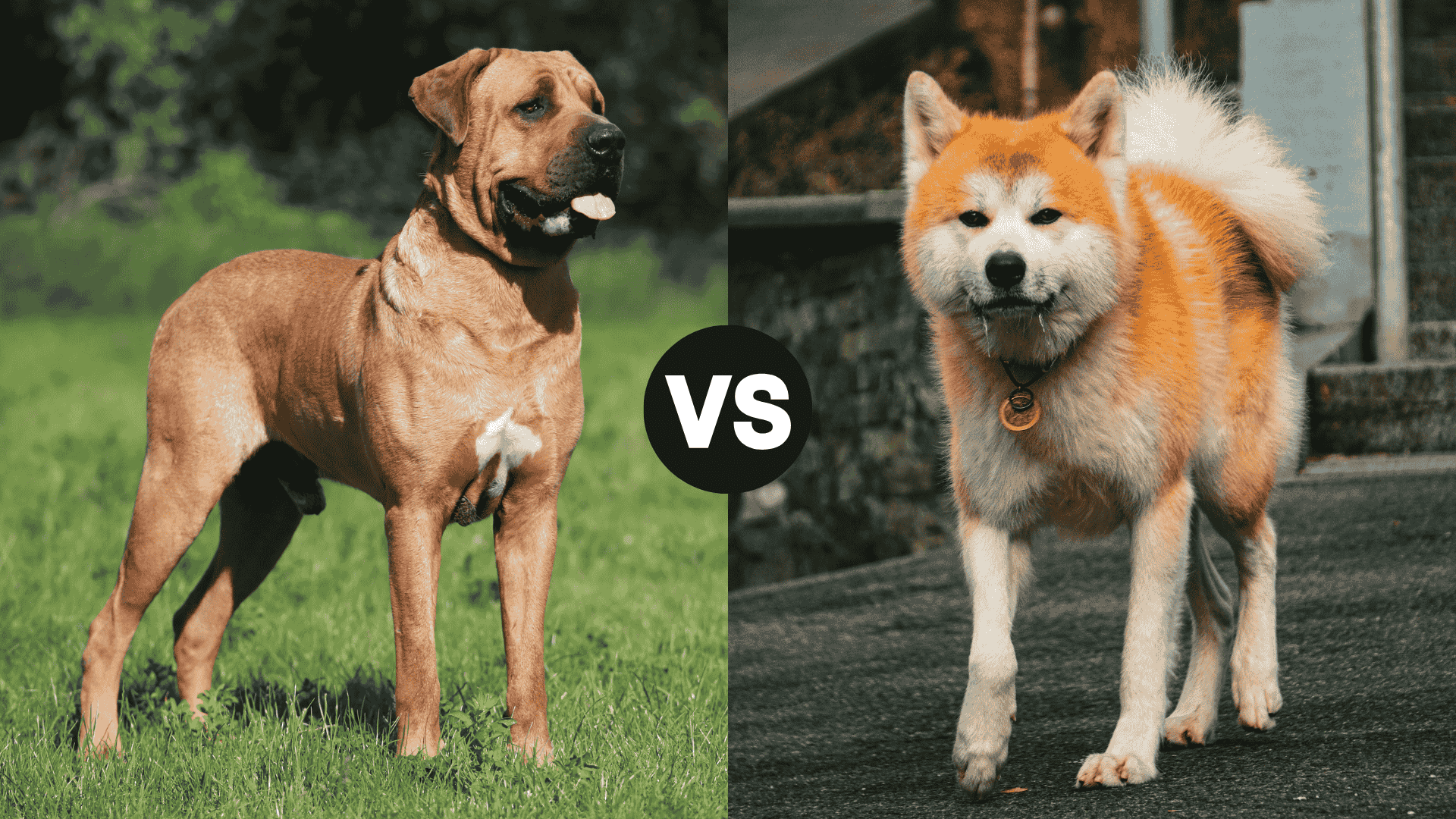Have you ever looked at a dog and just known it meant business? That’s the vibe with both the Tosa Inu and the Akita: massive, proud, and deeply rooted in Japanese history. But while both breeds might seem similar in size and seriousness, their stories couldn’t be more different.
The Akita is a symbol of loyalty in Japan, and for good reason. Just think of Hachiko, the Akita who waited every single day at a train station, for his owner to come home, long after the man had passed away.
Tosas, on the other hand, come from a harsher past. Originally bred as a fighting dog, their demeanor reflects that history, calm, deliberate, and often reserved with strangers. Because of that, early socialization and positive reinforcement training are essential. PetMD highlights that well: owning a Tosa means raising a stable dog from the start, not trying to fix problems later.
Whether you’re drawn to a hunting dog or a family guardian, the Tosa Inu vs Akita decision goes way beyond size. It’s about temperament, lifestyle, and how you handle powerful breeds. This comparison covers it all, temperament, training, grooming, health, and throws in a few myth-busting truths along the way. Let’s dive in.
Tosa Inu vs. Akita
From size and strength to grooming, health, and behavior, this head-to-head guide compares every essential trait, helping you decide which of these powerful Japanese dog breeds fits your lifestyle.
Size and Weight Differences
Okay, so size matters here.
Tosas, also called Japanese Mastiffs, usually pack more muscle than height. Males? They can hit 200 pounds easily. Their structure’s dense, like a moving tank, and their necks are thicker than most folks’ thighs. According to the American Kennel Club (AKC), most stand around 21.5-23.5 inches tall, but their build makes them look even more imposing.
Akitas, especially the American Akita, are taller and leaner. Males top out near 28 inches, females slightly less. Their weight ranges more, anywhere between 100 and 130 pounds, depending on gender and lineage. They’re got a big neck too, but it’s fur-covered, and they have this fox-meets-bear face that makes them look almost regal.
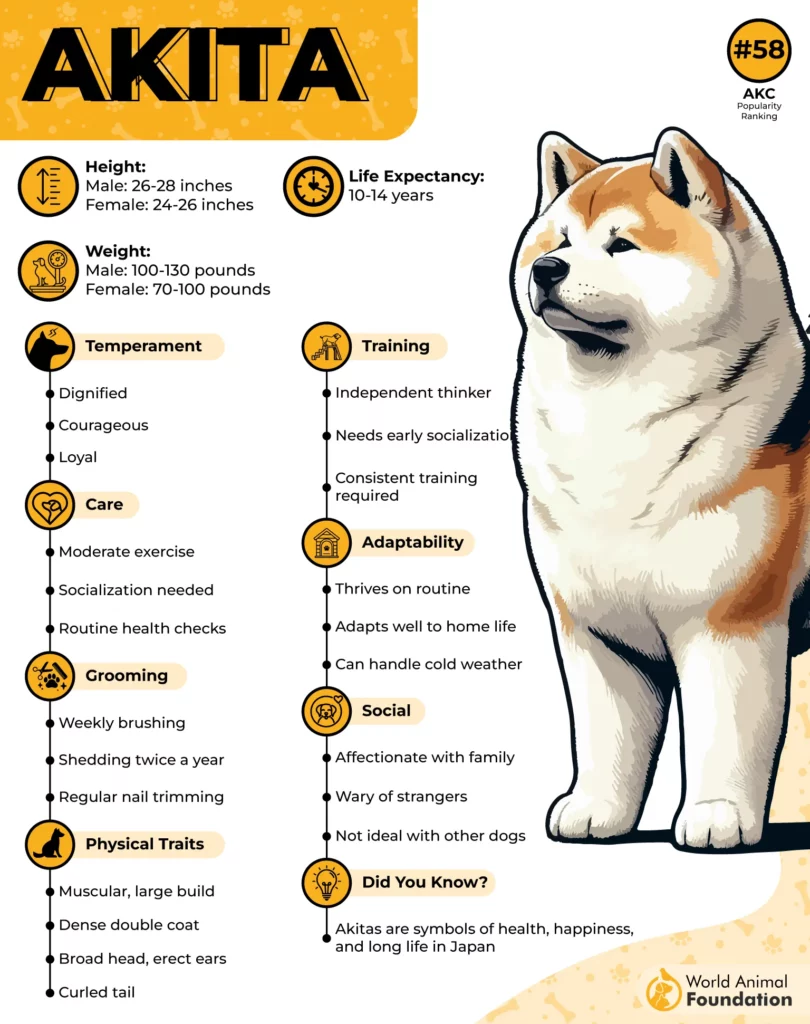
So yeah, Tosa wins bulk, Akita wins height. But both? Definitely large dog breeds.
Temperament and Personality Traits
If you’re after a cheerful, friendly pup that loves everyone at the park, then keep scrolling.
Tosa Inus are quiet. Like eerily quiet. Historically, they were trained to fight in silence, no barking, no growling. That trait? Still sticks. They’re patient, deliberate, and low-reactive, but don’t mistake that for softness. Around other dogs, especially same-sex or other dominant breeds, Tosas can snap fast. They’re often described as guard dogs, but in reality, they’re closer to calm war generals.
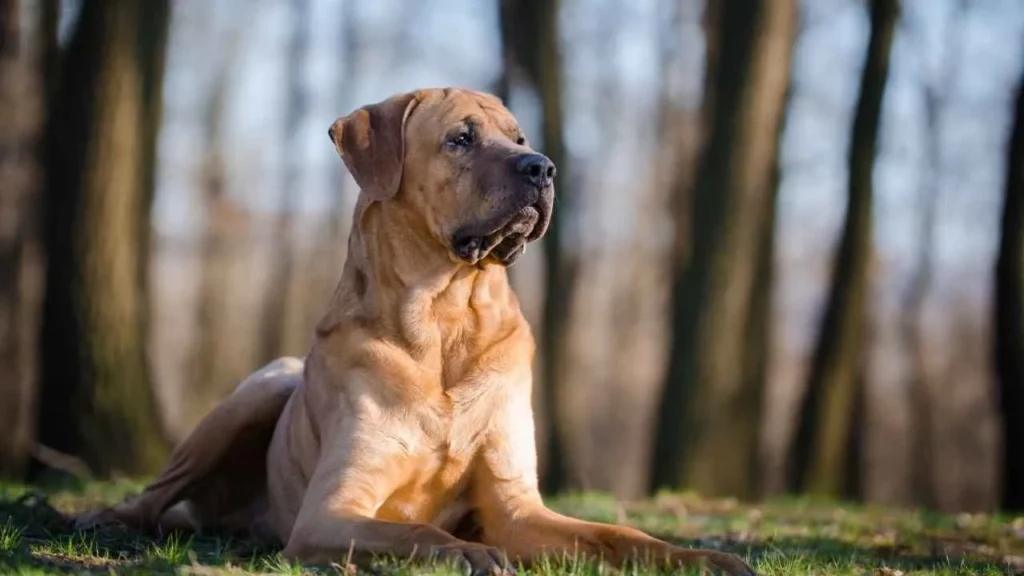
Akitas, meanwhile, are aloof. They might be loving at home, especially with their person, but strangers, kids, and other pets? That’s iffy. Two Akitas in one house? Risky. They’re not fighting dogs per se, but they can be aggressive if not trained correctly. They’re also stubborn. Akita fanciers will admit it: they don’t listen unless they respect you.
Both breeds demand firm leadership. Neither is ideal for first-time owners or chaotic homes.
Bite Strength and Jaw Features
Let’s talk power.
Exact PSI numbers get tossed around online, but few are reliable. What do we know? The Tosa’s jaw is wider and has a bite force of 556 PSI. This dog was bred for stamina in fights. Its deep neck, folded skin, and strong chest made it suited for lasting longer in the ring. It’s literally designed to withstand bites and stay in the match.
Akitas? Historically used to hunt boars and bears in the Japanese mountains. Their bite force lies between 300 and 400 PSI. So, yeah, they bite hard too. Their muzzle is slightly shorter, their neck thick with muscle and fur. Less about holding ground, more about the kill.
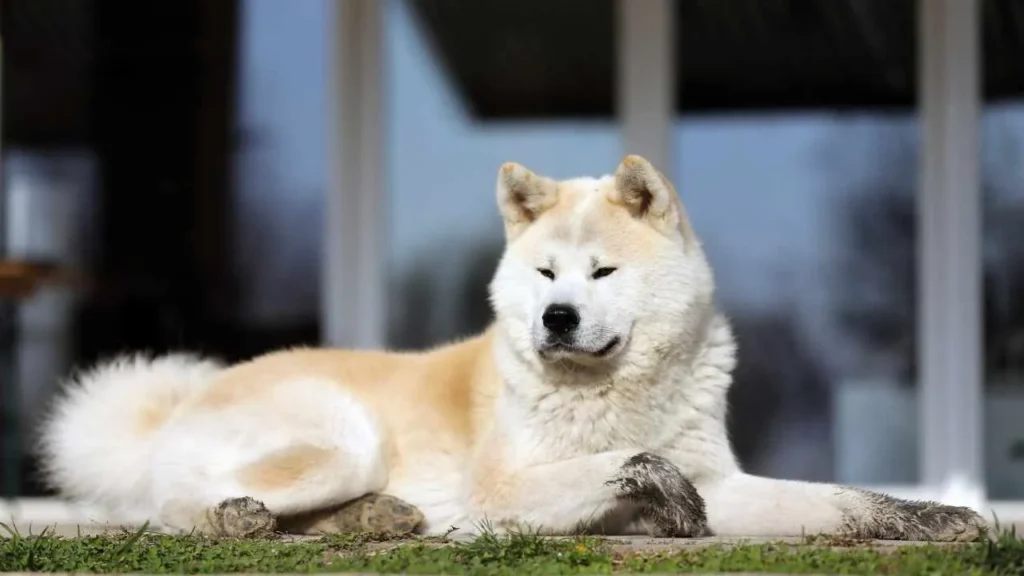
If you’re wondering who would win a fight, Tosa Inu or Akita, it’d be close. Akitas fight with more persistence. Tosas? More brute strength.
Again, none of this should ever be tested. It’s about understanding breed background, not promoting dog fights.
Lifespan and Common Health Issues
Both of these big Japanese breeds actually live longer than you’d think, all things considered.
Now, Tosa Inus usually get about 10 to 12 years, give or take. It’s not uncommon for some to dip just under that if poorly bred. One thing to note is their tendency for joint problems, hip and elbow dysplasia are a usual suspect. Add to that the risk of gastric torsion (bloat), which they’re kind of built for, sadly. Wide, deep chests don’t help there.
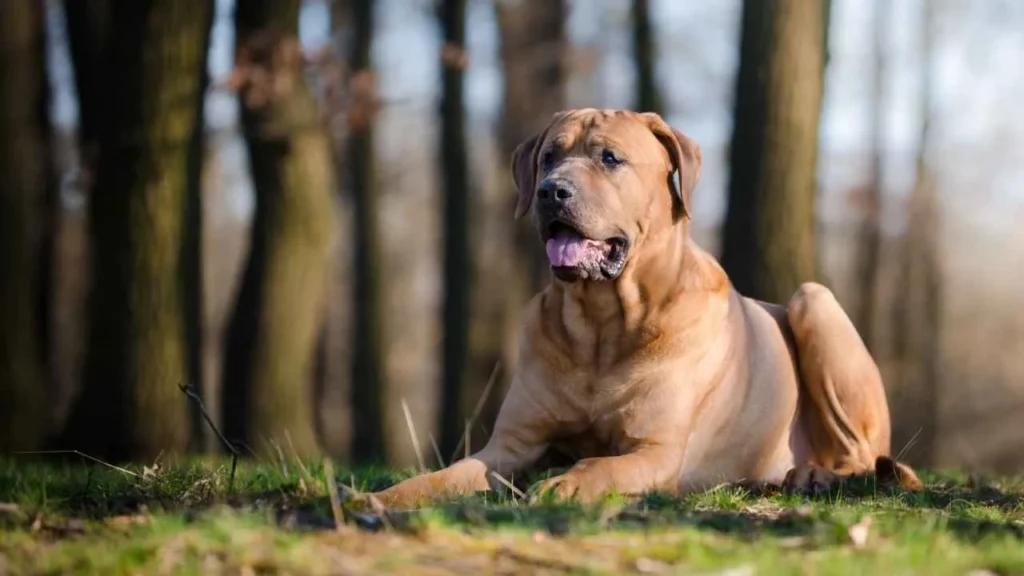
Akitas are a little more well-documented. These dogs live anywhere from 11 to 15 years, and sometimes longer if they’re well cared for and kept lean. WebMD notes they’re predisposed to quite a few issues: eye problems, thyroid conditions, bloat, and, yep, hip dysplasia too. That thick fur they’ve got? It can hide stuff. People sometimes miss early symptoms, which is risky.
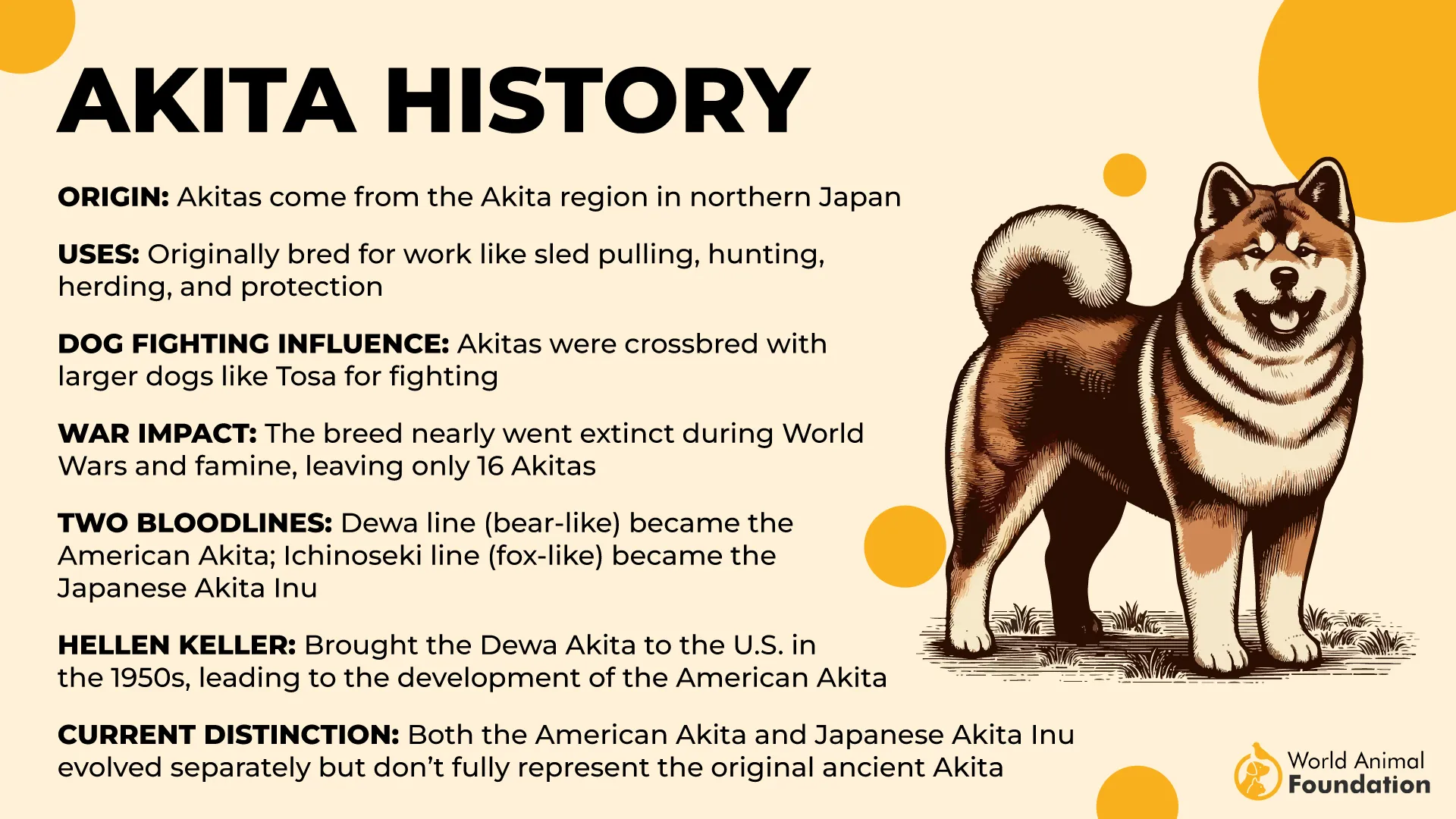
It’s worth saying that owning either of these dogs means you have to stay ahead of their health. Regular vet visits? Non-negotiable. And if the breeder doesn’t do genetic health testing, that’s a red flag. No shortcuts.
Energy Levels and Daily Activity Needs
Sorta, kinda. Depends on how you define “active.”
Akitas – They’re more alert. More structured exercise, mental stimulation, and command-based training are needed. They’re not hyper, but they get bored. A bored Akita will chew, dig, and ignore your calls like you’re invisible.
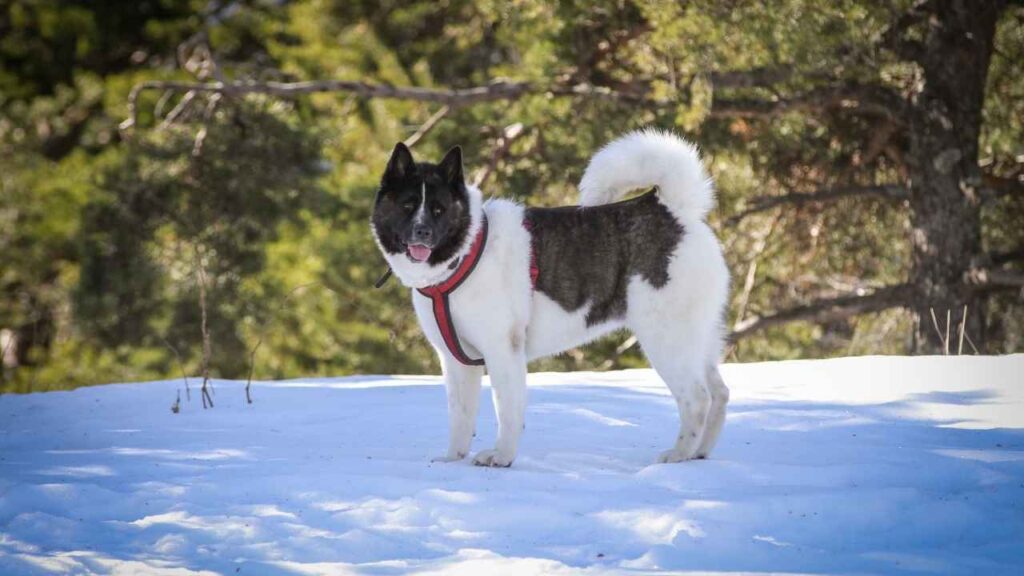
Tosas – In contrast, they are surprisingly lazy indoors. A couple of good walks and they’re out cold on the floor. Still, they need boundaries and strong handling. Otherwise, you might have 140 pounds of “I do what I want” in your living room.
Neither dog is made for first-time owners, but both can be satisfied with firm routines.
Nutrition and Weight Control
Feeding these dogs isn’t just about scooping kibble into a bowl.
Akitas have slower metabolisms. They’re prone to weight gain and should avoid high-fat foods. Feed them high-protein, moderate-fat, with glucosamine for joints. Stick to a schedule, no free-feeding.
Tosas, lazy as they sometimes are, will balloon up if you’re not careful. Bloat is another issue; don’t feed before or after vigorous exercise. Stick with measured meals and ask your vet what’s best for their build.
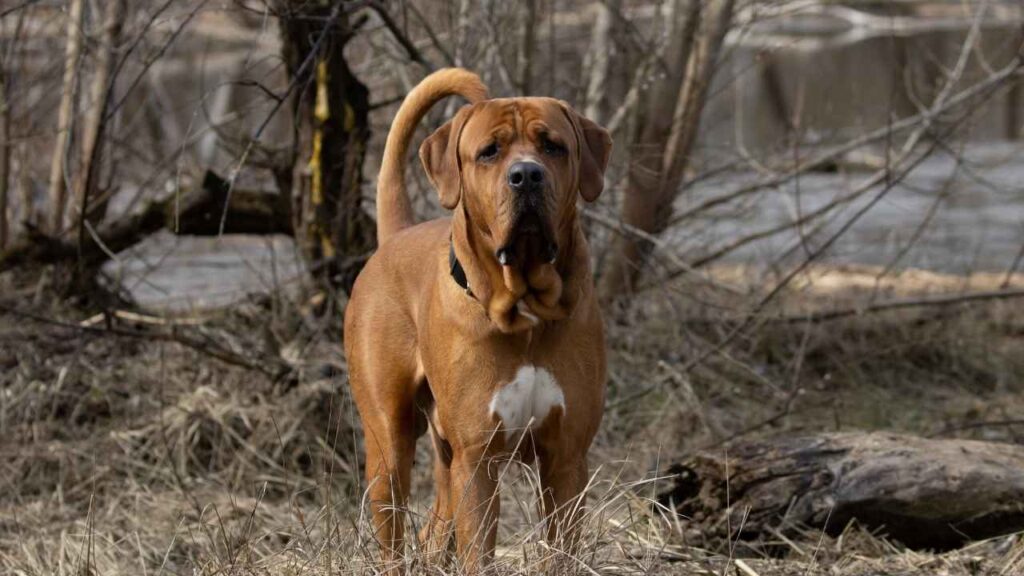
Obesity hits both breeds hard and fast. Keep them lean to keep them living.
Grooming Needs and Allergy Concerns
Here’s the key difference that could sway allergy-prone owners.
Akitas are total shed machines. Two times a year, they “blow their coat,” and it’s like someone exploded a pillow in your home. Daily brushing is needed during that time. Also, their fur traps allergens, which is not ideal for allergy sufferers.
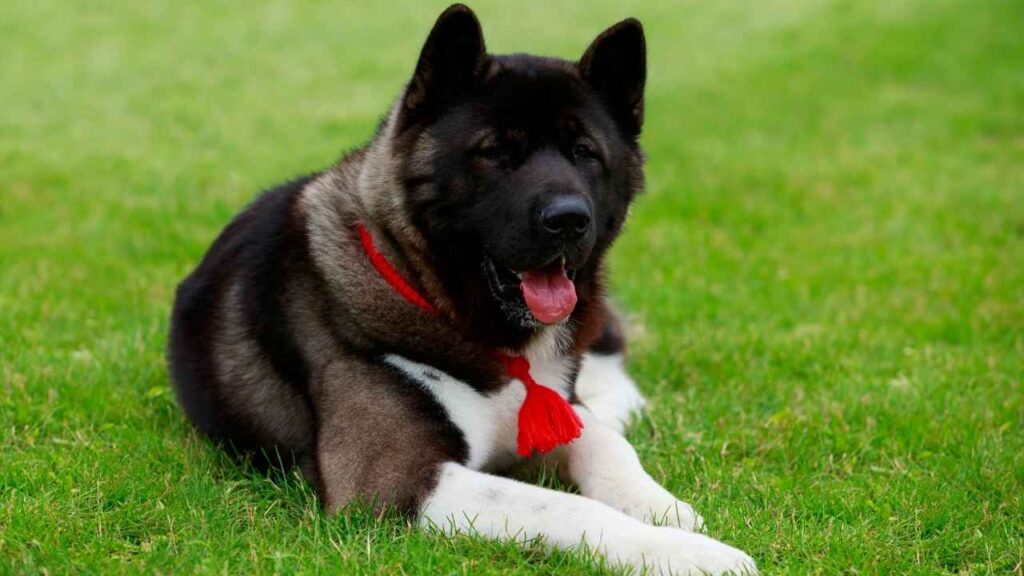
Tosas? Short-haired, low-shedding, and generally low-maintenance. Brushing once a week should do it. Their coats don’t trap dander the same way, though they’re not hypoallergenic dog breeds, either.
So if grooming’s a chore, Tosa wins that round.
Final Thoughts
Let’s break it down without fluff.
Go with the Akita if you want a bold, loyal, and silent guardian that chooses you and needs deep mutual respect. Think Japanese nobility in a dog’s body. They’re proud, reserved, and stunning.
Choose Tosa Inu if you want raw presence, quiet loyalty, and a dog that respects calm, firm leadership. Not flashy, not loud, but absolutely commanding. They’re not for casual owners, period.
Both breeds are powerful, ancient, and uniquely Japanese. But they come with huge responsibility. Whether you’re an Akita breed lover or intrigued by the rare Tosa, the real question isn’t who’d win a fight. It’s what fits in your lifestyle without forcing it.


